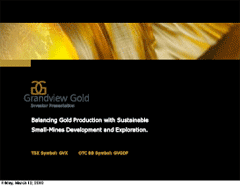» Peru
» Red Lake Gold District
¦ Regional Activity
¦ Regional Geology
¦ Past Exploration
¦ Deposit Types
¦ Mineralization
¦ Geology
¦ Past Exploration
¦ Deposit Types
¦ Mineralization
¦ Drilling Results
¦ Resource Estimates
¦ Geology
¦ Past Exploration
¦ Deposit Types
¦ Mineralization
¦ Drilling Results
¦ Resource Estimates
¦ Geology
¦ Past Exploration
¦ Deposit Types
¦ Mineralization
¦ Drilling Results
¦ Resource Estimates


Red Lake Gold District
Regional Geology
The Red Lake Gold District is underlain by 2.5 billion year-old rocks.
Part of the Uchi Sub-province and the larger Superior province of the Canadian Shield, the Red Lake district is a north-east trending greenstone belt, made up of metavolcanic rocks. These metavolcanic rocks are sub-divided into assemblages, the most important being the Balmer Assemblage. Many of the most successful and prolific gold mines are found within the Balmer Assemblage. The oldest rocks in the Uchi sub-province, the Balmer Assemblage "consists of basaltic tholeiite and komatiite flows with intercalated magnetite-quartz iron formation."
The younger Confederation Assemblage makes up the northern and southern flanks of the Red Lake Archean greenstone belt and consists of rock systems that are calk-alkalic reduced containing felsic pyroclastic deposits.
The Red Lake greenstone belt, located within the western portion of the Arch�an Uchi subprovince, is a typical granite-greenstone sequence that has received considerable study exploration for over 80 years. The sequence, a series of generally east-west trending belts, is often sub-divided into several distinct assemblages.
The oldest, the Balmer assemblage, which hosts the Red Lake Mine, comprises some 50% of the belt, is characterised by tholeiitic to komatiitic flows, minor felsic volcanic rocks sediments. The second, the Balmer assemblage, is typically calc-alkaline, consisting of mafic (& lesser felsic) flows a sequence of chemical clastic rocks. The third assemblage, Slate Bay, is predominantly a clastic sedimentary sequence that overlies the Balmer assemblage. The Bruce Channel assemblage is a discordant sequence also overlying the Balmer, consists of extensive volcaniclastic rocks, conglomerate, silts wackes.
In the North eastern parts of the belt, the region is underlain by the Confederation assemblage, typically a tholeiitic to calc-alkaline volcanic assemblage with abundant felsic pyroclastic rocks.
In the Red Lake, area, there are a number of large granitoid plutons smaller intrusions, notably, the Dome MacKenzie, both of which hosted past producers. The Howey diorite is a third example of an intrusive body that hosted exploited gold, at the Howey Hasaga mines.
The structural geology of the Red Lake camp has been studied in great detail, is a key component in localizing mineralization. There are two major deformational episodes that define much of the geometry of Red Lake geology: an early phase responsible for north-east trending folds a later, major regional deformation (shearing), that is associated with the development of East to south-east trending shear zones. Subsequent geometries are sequences of doubly plunging, shallow steeply dipping units.











